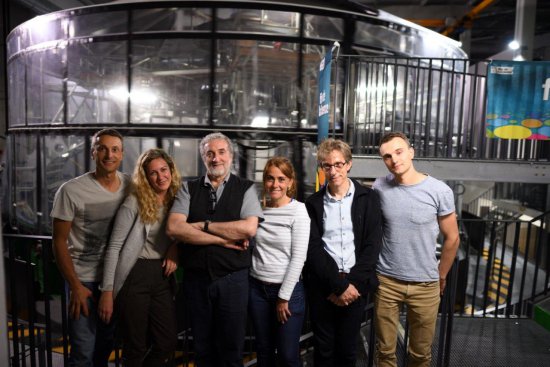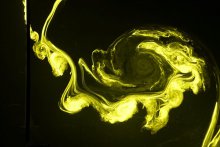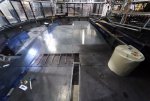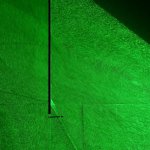Western boundary currents (WBCs) are very intense currents that flow along the western boundaries of the oceans and owe their peculiar structure to the sphericity of the earth, which generates the so-called planetary beta effect. The Kuroshio and Gulf Stream (GS) are notable examples of WBCs belonging to the subtropical gyres of the North Pacific and Atlantic Oceans, respectively. The effect of WBCs and of their respective extensions on climate is well known, and is due to their huge heat transport, the corresponding air-sea interactions and the role they play in sustaining the global conveyor belt (e.g., Qiu 2000, 2003 ; Ganopolski and Rahmstorf 2002 ; Kelly et al. 2010).

One of the most interesting and intriguing WBC phenomena of climate relevance is the interaction of the jet with a gap located along the western coast. Only few studies in much smaller tanks (Kuehl and Sheremet 2009, 1m tank diameter) have been undertaken so far, but the dynamics of these currents is largely dominated by non linear effects that can be reproduced at the large Coriolis platform. Also the set-up allows for a long experimental duration that enables to study the variability of such currents.
A pumping system located in channel C produces a current of speed up that, following the lateral boundaries, generates a virtually unsheared flow at the entrance of the slope, which in turn provides the topographic beta-effect necessary for the intensification (this imposes the use of homogeneous water). The interaction of the WBC with a gap is studied by introducing the gap along the "western" boundary that can also include smaller gaps to represent islands.
Measurements techniques are based on ADV to give the initial velocity conditions (up) at the channel outlet and PIV measurements to obtain the velocity field at the western boundary and through the gap.

Project Leader :
Stefano PIERINI : University of Naples (Italy)
Member :
- Henk A. DIJKSTRA : Utrecht University (The Netherlands)
- Paola de RUGGIERO : Parthenope University of Naples (Italy)
- Ilana SCHILLER WEISS : Utrecht University (The Netherlands)
- Julia WEIFFENBACH : Utrecht University (The Netherlands)
- Eletta NEGRETTI : LEGI (France)
- Joël SOMMERIA : LEGI (France)
- Samuel VIBOUD : LEGI (France)
- Thomas VALRAN : LEGI (France)








